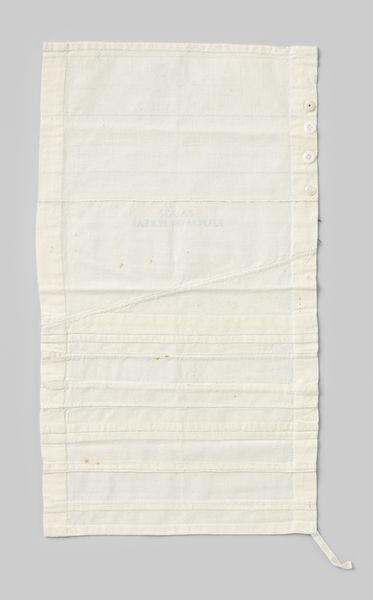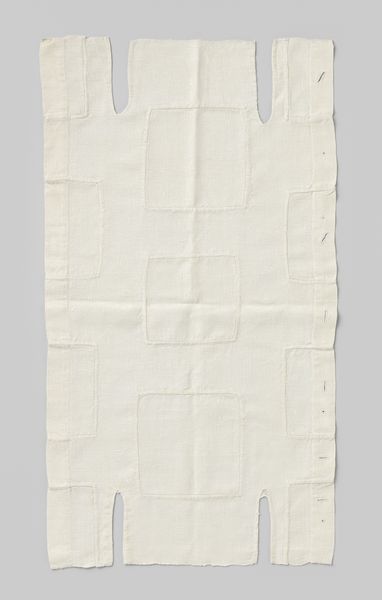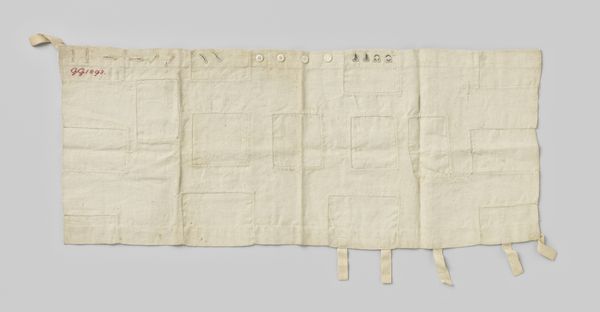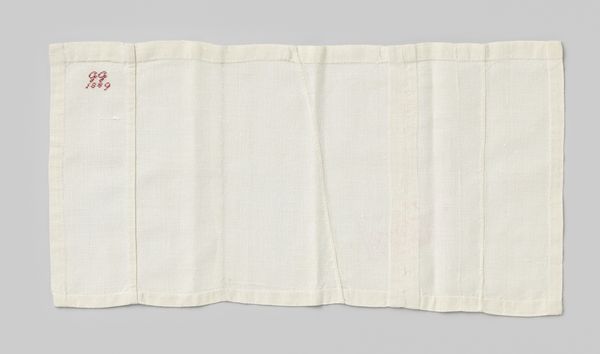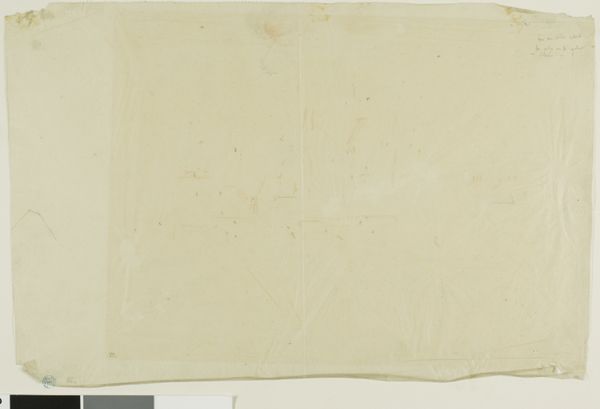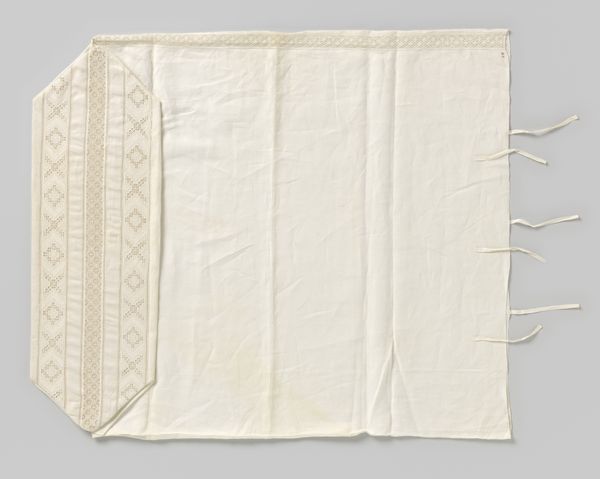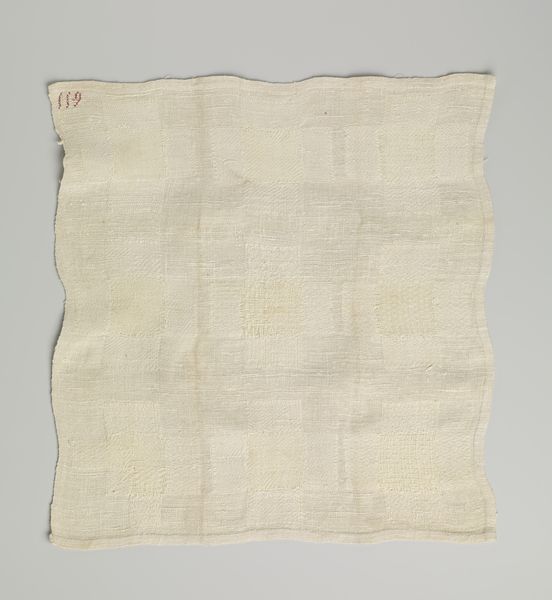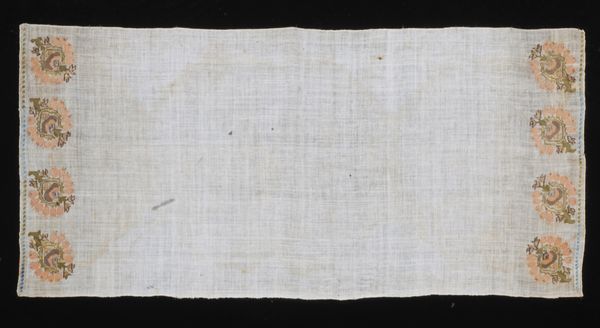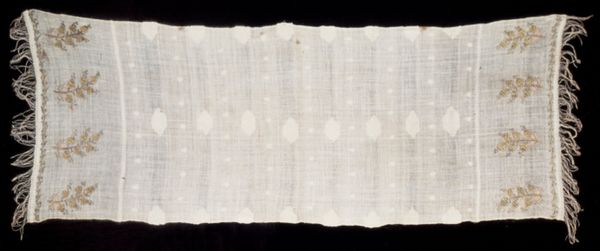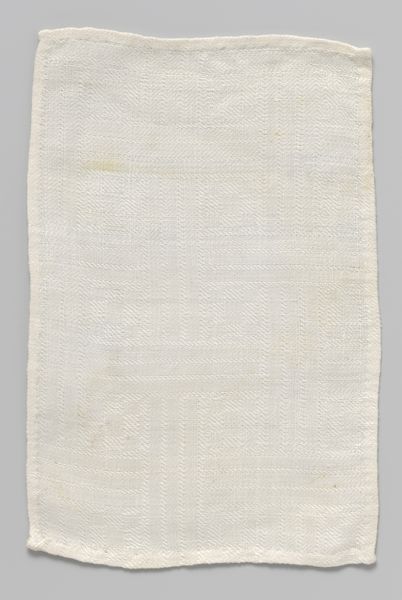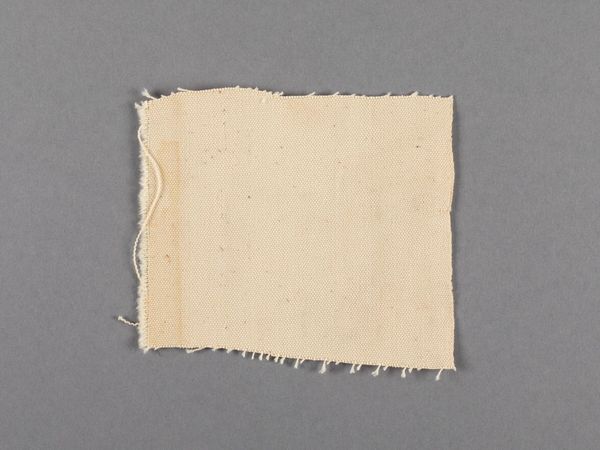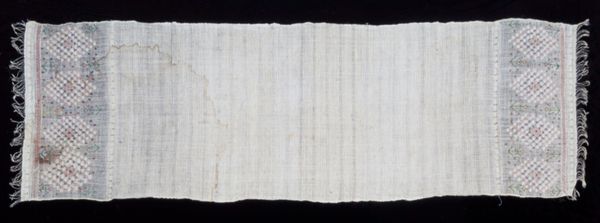
fibre-art, textile, cotton
#
type repetition
#
fibre-art
#
textile
#
geometric
#
embossed
#
united-states
#
cotton
#
decorative-art
#
imprinted textile
#
realism
Dimensions: 22 x 38 in. (53.3 x 96.5 cm)
Copyright: Public Domain
Catherine Ten Eyck Burr made this pristine, white linen pillowcase, now held at the Metropolitan Museum of Art, sometime during her lifetime, which spanned from 1798 to 1865. The pillowcase, with its delicate frilled edges, speaks to a deeper history of domestic textiles. Consider the color white; it signifies purity, cleanliness, and even new beginnings across many cultures. Think of white vestments in religious ceremonies, or the white dress donned at a wedding. White as a color speaks to a fresh start, unblemished and full of promise. But now, let us look closer at the frills around the edges, decorative and protective. The frill is a motif that recurs throughout history, from the draped fabrics in classical sculpture, symbolizing status, to the elaborate ruffs of the Renaissance, meant to ward off evil spirits by protecting the neck. The frill evolves from mere adornment to a talisman of protection. This pillowcase represents a cultural and deeply personal act, where everyday objects are infused with layers of meaning, connecting the past with the present and reminding us that even the simplest of items carry the weight of history and human emotion.
Comments
No comments
Be the first to comment and join the conversation on the ultimate creative platform.
